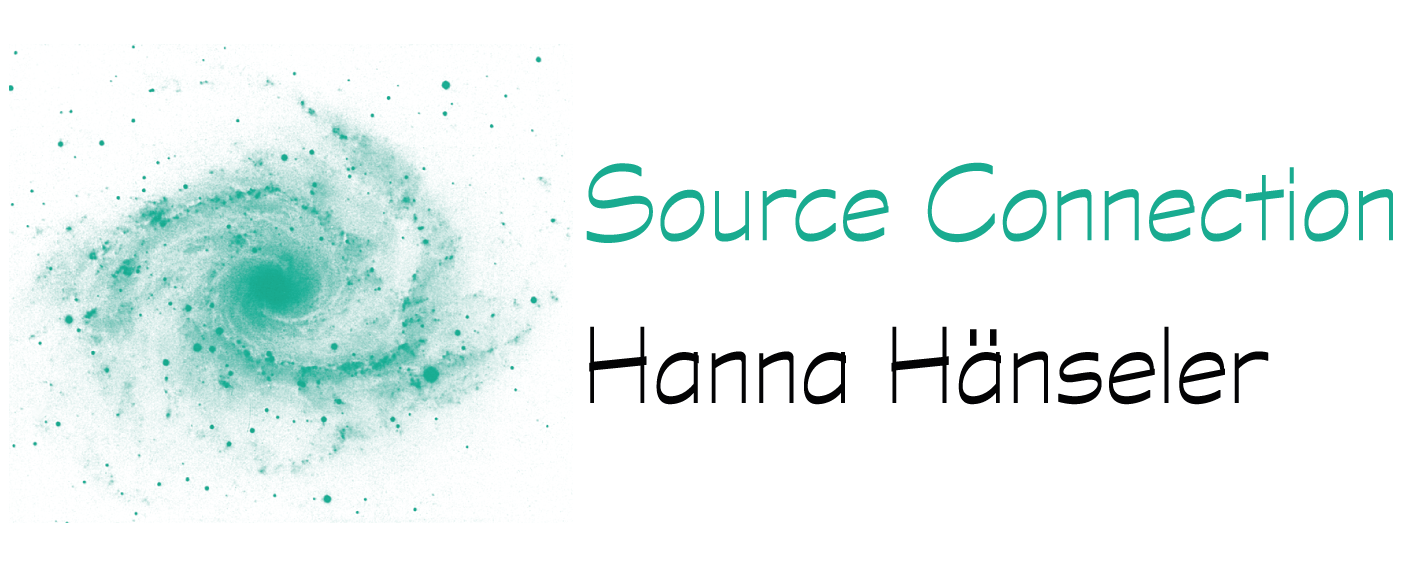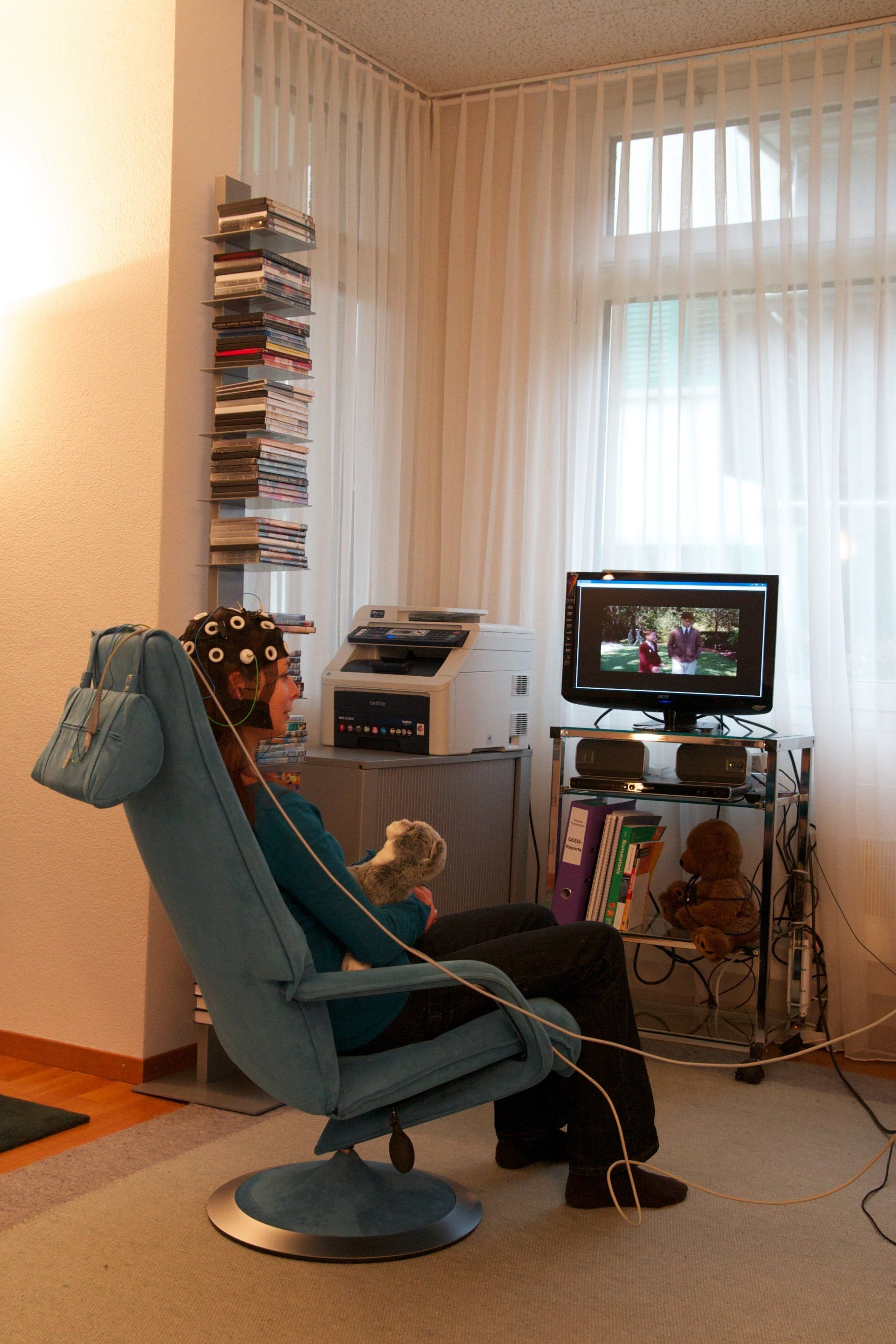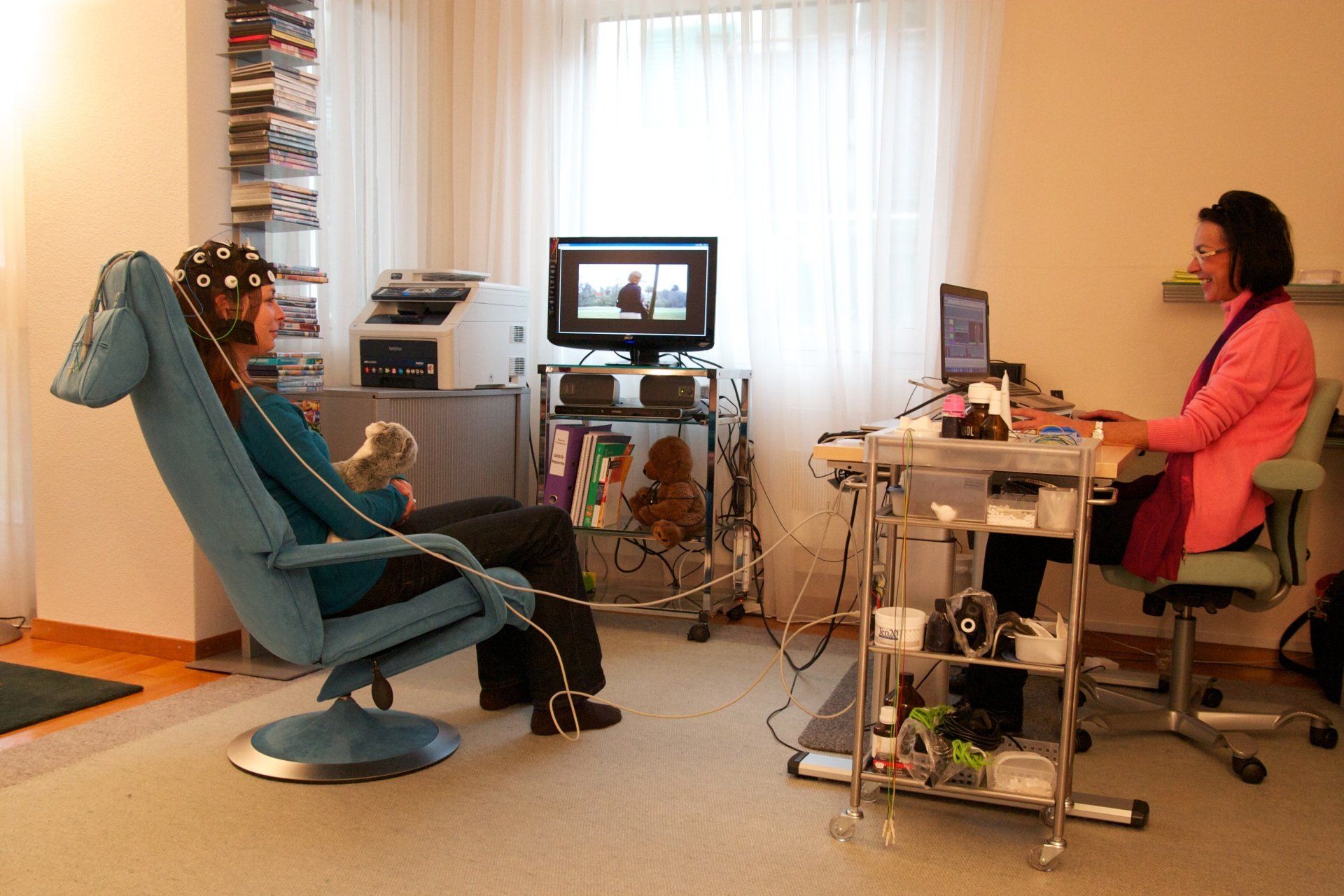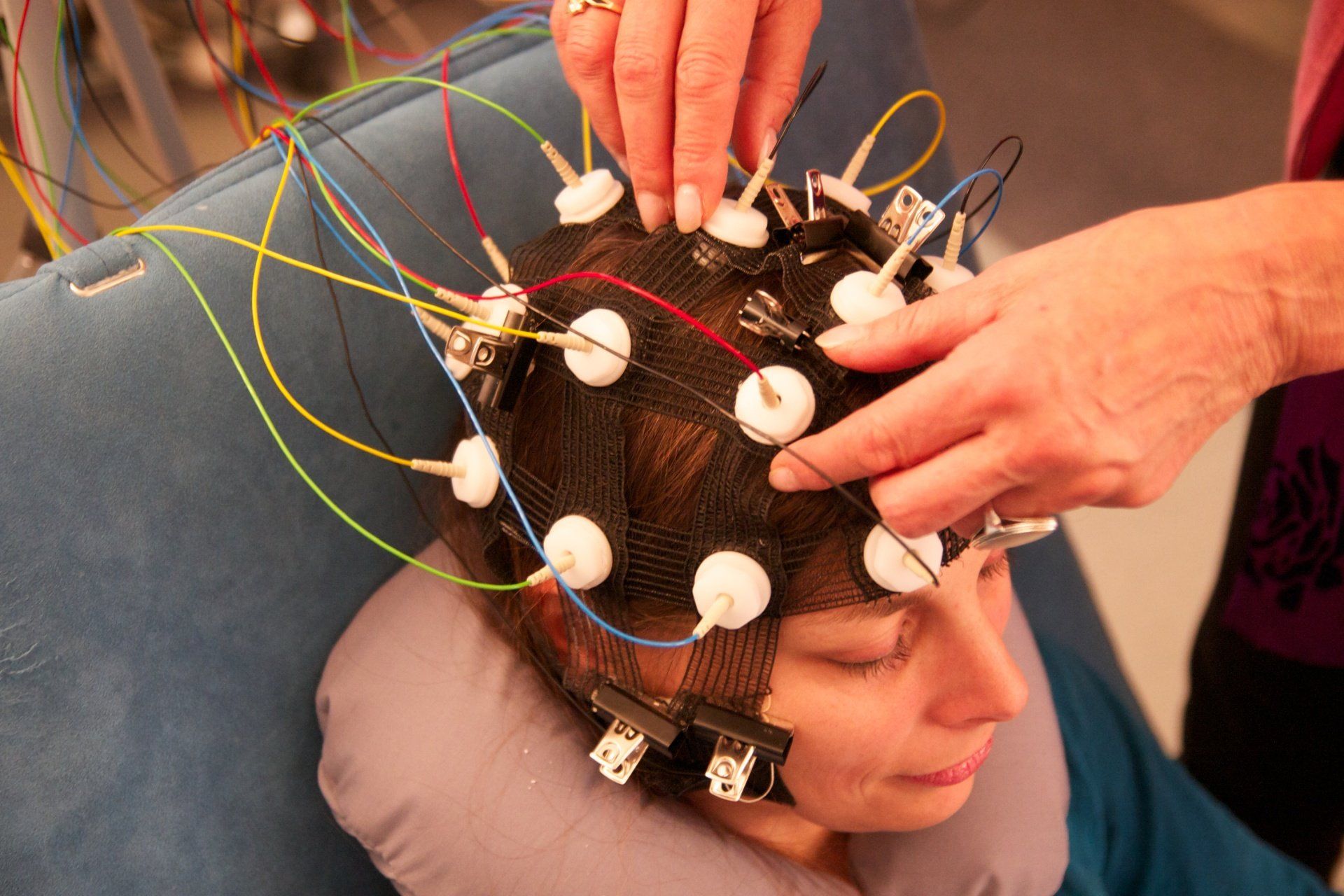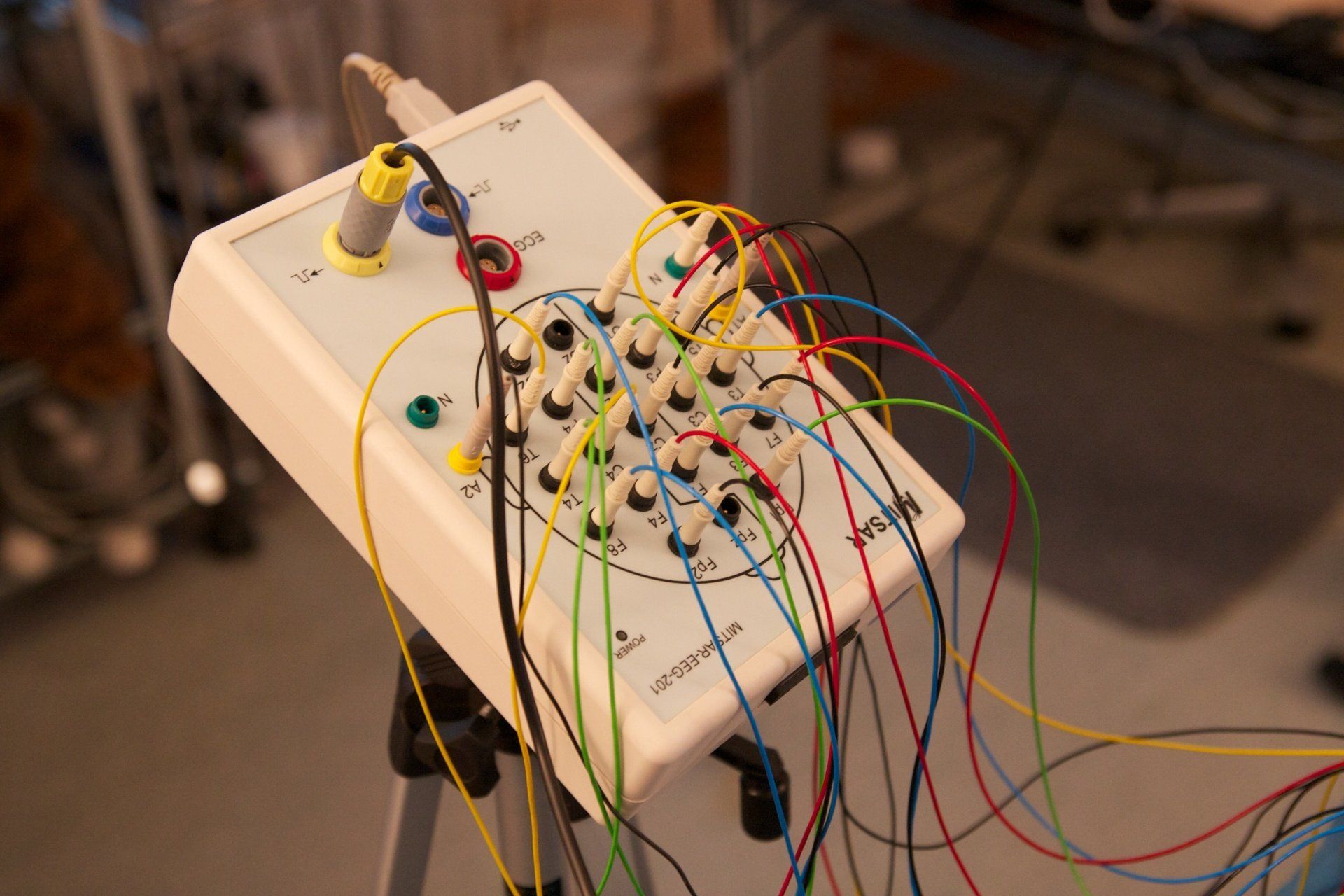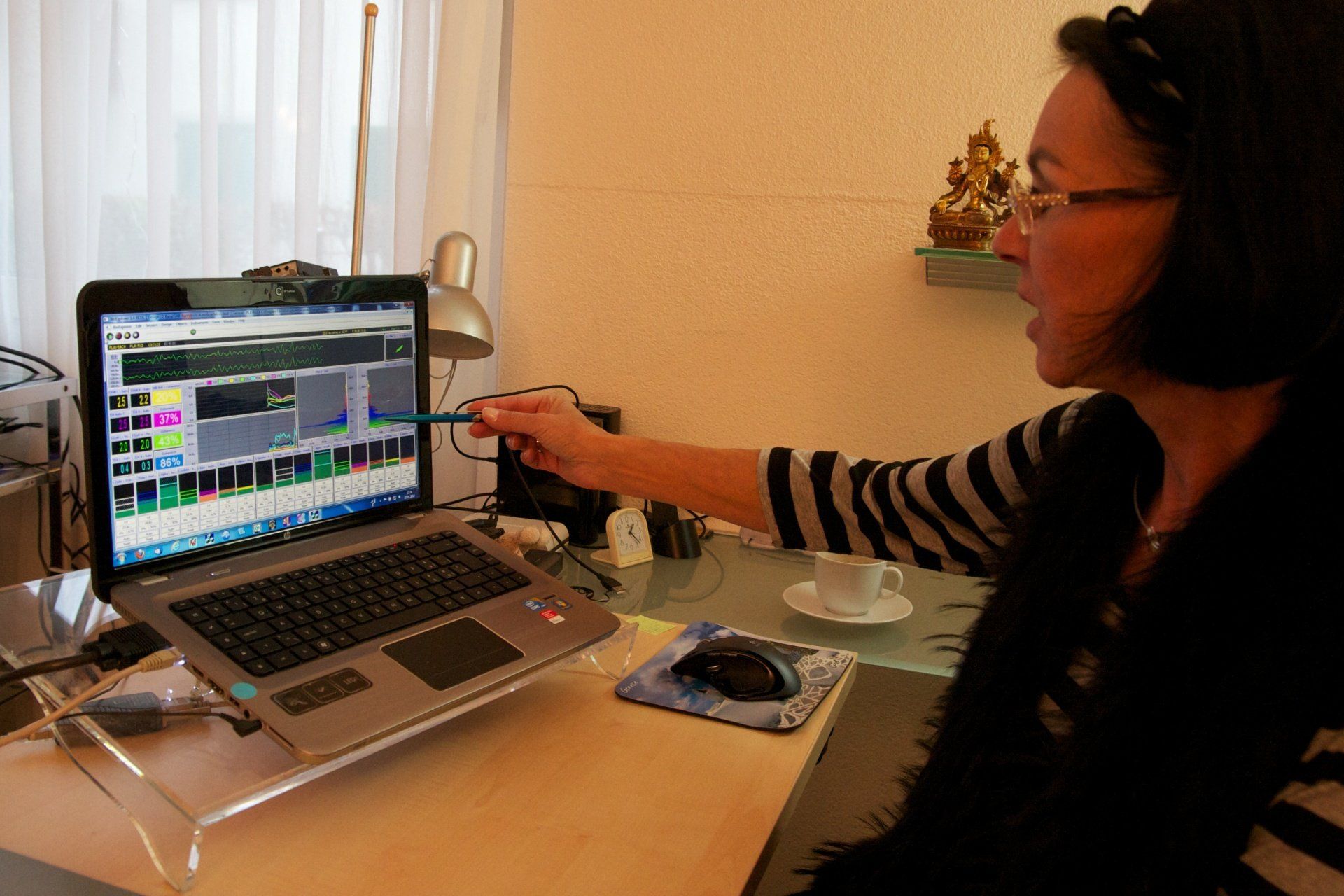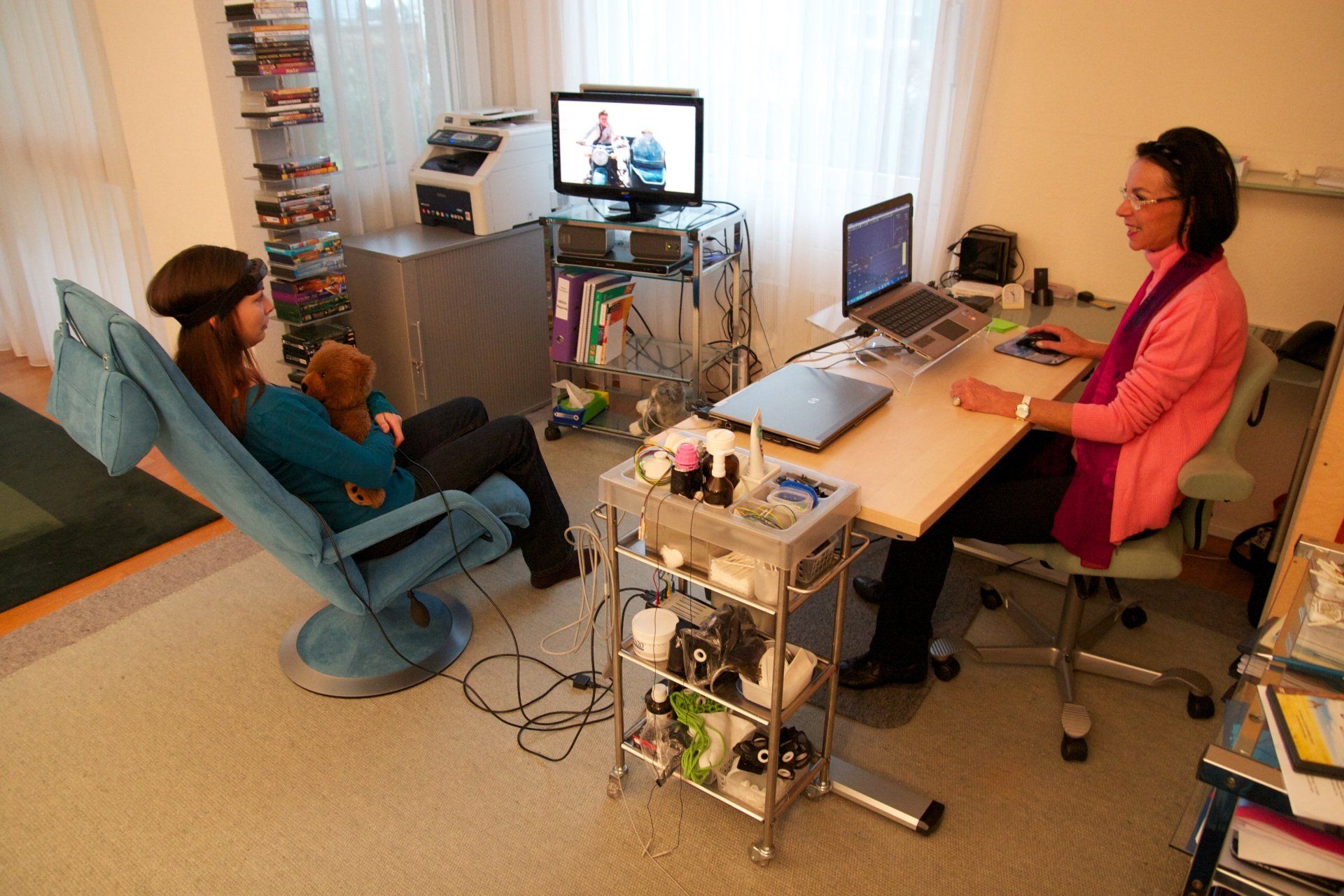Neurofeedback, Biofeedback, qEEG
Brain training according to scientific standards
The state of the human brain has a major influence on a person's well-being, performance and success. With neurofeedback, the brain can readjust itself and function more efficiently. Patients who train show improved performance and feel more balanced, inner calm, self-confidence and joy. The positive effects are long-lasting.
What is neurofeedback?
Neurofeedback is a training of brain wave activity and thus of brain functions. This training is based on the biological principle of self-regulation. With the help of feedback on brain wave activity, learning and performance can be increased in a natural way.
From birth, every person receives continuous feedback from their environment - this feedback is the primary tool for learning a new skill. When a child learns to walk upright, the brain learns to maintain balance through a suitable movement pattern. Walking becomes a new skill. After a short time, this happens completely subconsciously and the learned skill becomes permanent. Neurofeedback works on exactly the same principle - without conscious effort and without any pain or medication!
During neurofeedback training, electrodes are attached to the scalp and a computer program sends audiovisual feedback (via videos, sound and images) to the brain based on the measured brain wave activity. In this way, the brain becomes aware of its performance; it receives information about more and less productive states, interprets this information and learns to work optimally. Thanks to the precise feedback in real time, it is increasingly trained to work in a balanced and stable manner and to think in a focused manner. The gradual learning process leads to a sustainable increase in performance. After a while, the influence on brain activity occurs subconsciously and no longer requires concentration. Neurofeedback is therefore a training of brain wave activity and thus of brain functions.
How can neurofeedback help?
Neurofeedback has been proven to have a positive influence and lasting effect on various complaints. However, it can also be used as a means of improving performance in "healthy" people. The ability to concentrate and relax are just two of the many things that can be improved thanks to neurofeedback. I would like to give you a brief overview of the areas of application here:
- Improving performance in school, academic or professional environments
- Improved ability to concentrate (work with focus, listen carefully, remember easily)
- Increasing the resilience of body and mind
- Increase balance and relaxation
- Migraine, frontal headache
- Sleep disorders
- Anxiety disorders
Neurofeedback has many applications
ButtonOther areas of application of neurofeedback
Numerous areas of application for neurofeedback training are still being researched. For example, the Psychological Institute of the University of Zurich has been conducting extensive clinical studies for years with the aim of confirming the effectiveness of neurofeedback treatment for tinnitus patients and has achieved excellent results. However, the list of disorders, illnesses and problems that can be treated with neurofeedback training is much longer:
Neurofeedback is not suitable for people with productive psychosis, advanced dementia or people who are in a state of confusion.
References and video on neurofeedback training
After my intensive studies and numerous further training courses with various neurofeedback pioneers such as Tom Collura, Ph.D., Peter van Deusen, Ph.D., Val Brown, Ph.D., Sue and Siegfried Othmer, I completed various further training courses in quantitative EEG with Prof. Dr. Juri Kropotov and Dr. Andreas Müller. My experience with various neurofeedback systems is extensive and includes Brainmaster, NeuroCarePro, BioExplorer, Cygnet and Braintuner (tomographic sLoreta NFB).
Newspaper article about my work with neurofeedback
ButtonIn recent years, several newspaper articles have appeared about my work in the field of neurofeedback:
- “With Jürg, nothing is as it used to be”, Neues Bülacher Tagblatt (2007)
- “My life is good, meaningful and wonderful again”, an article by Christel Müller (December 2011)
Film of the Neurofeedback Biofeedback Organisation Switzerland
The short video summarizes how neurofeedback has different areas of application and has been used successfully by leading doctors and clinics for decades.
Source: Neurofeedback Biofeedback Organisation Switzerland
With neurofeedback training, many complaints can be treated fundamentally and sustainably – without any medication.
Would you like to know whether neurofeedback can help you? I would be happy to advise you!
Call me, send an email or use the contact form on the contact page.
My practice in Bülach
My practice is centrally located in Bülach and is easily accessible from Winterthur, Zurich and Schaffhausen by public transport. For those driving, there is a free parking space in the in-house underground car park.
Costs of neurofeedback therapy
The cost for an initial consultation of around one and a half hours and per training session of 60 minutes is CHF 150. As an ASCA-recognized therapist, various health insurance companies cover part of the costs for neurofeedback training through their supplementary insurance.
Your individual neurofeedback training program
In an initial consultation lasting about one and a half hours, we will discuss your concerns and expectations. Neurofeedback training is very individual, just like its versatile applications. After a trial session, you will receive a suggestion for a training program.
Neurofeedback is suitable for children, adolescents and adults. The training is sustainable and has no side effects. No electrical currents are sent to the brain and the treatment is absolutely painless.
Training process and duration of neurofeedback therapy
The raw EEG is measured via electrodes attached to your head. The measurements are amplified in real time and passed on to a computer program, where they are made visible and/or audible. The procedure is absolutely painless - in fact, depending on the training protocol, many patients even find the treatment enjoyable.
The patient always sits completely relaxed. Otherwise, however, neurofeedback training takes place differently depending on the patient's age, concerns and individual status. For children, it sometimes takes the form of games, animations and media manipulation. Music, video content and sounds are also used in the treatment. This is how brain activity is controlled or influenced.
Undesirable waves in the brain waves that cause anxiety, depression and feelings of stress are reduced in the long term, while positive waves are trained. Through frequent feedback, the brain learns to permanently reorganize itself.
A positive effect of neurofeedback training can often be noticed after the first session. Sometimes, however, it takes six to eight sessions before noticeable changes occur. Good and lasting success is usually achieved with 18 to 22 training sessions, although in rare cases it requires more effort. In order to achieve a specific goal, neurofeedback training usually takes place over a period of several months, during which you visit me regularly for your training in my practice in Bülach, near Winterthur. In rare cases, a short refresher course of a few training sessions at a later date may be advisable.
Initially short, later longer appointment intervals
At the beginning of the training, it is recommended to complete two training sessions in the first week. Then the frequency is reduced and it is advisable to plan a neurofeedback training session weekly and later approximately every two weeks. In special cases, intensive training can also be arranged, for example during the holidays.
qEEG analysis for more clarity
Neurodiagnostic assessment using quantitative EEG (electroencephalogram)
In certain cases, it is sensible and desirable to comprehensively assess brain functions using a qEEG analysis before neurofeedback training. The abbreviation qEEG stands for "quantitative EEG with evoked potentials". This is a neurodiagnostic method. It provides comprehensive data on how exactly the brain processes information and where any deficits lie. Based on this analysis, a very targeted and effective neurofeedback training plan can be drawn up.
A neurodiagnostic assessment (qEEG) can be of great importance for successful neurofeedback training. It is particularly recommended in cases of long-term chronic illnesses, brain injuries, concussions, rehabilitation after a stroke and also for determining the ADHD subtype.
The quantitative EEG, or qEEG for short, is also called brain mapping and records current brain activity. Through a detailed examination of the raw EEG, physical functional limitations of the brain and a variety of mental illnesses can be detected. The quantitative EEG I use is based on the Mitsar system and refers to the HBImed database.
The time required for a qEEG with three surveys (three measurements in different states) is approximately two hours. In addition, you will be asked to complete two questionnaires for a subjective assessment at home and bring them with you to the appointment for the qEEG recording.
Before your qEEG appointment, you should consider the following points:
- If possible, do not take any medication 48 hours before the EEG (with some exceptions – please be sure to check with your doctor before stopping any medication).
- Enough sleep the night before.
- Wash hair twice with pH-neutral shampoo. Do not use any styling products, conditioners or gels afterwards.
- Wear comfortable, loose clothing so you feel comfortable.
- Please bring both completed questionnaires with you to your qEEG appointment.
The evaluations are completed after about three weeks. You will receive a detailed written report on the results, a medical history, as well as training recommendations and, if necessary, further suggestions.
Biofeedback
Increased learning performance through more energy in the frontal brain
Biofeedback is used to increase blood flow to the frontal brain. It can be used alone or in conjunction with neurofeedback.
Biofeedback as a supplement
ButtonPromoting blood circulation in the frontal brain
«Passive infrared (pIR) HEG biofeedback» was developed by Dr. Jeffrey Carmen around 1998. HEG stands for hemoencephalography, which can be roughly explained as brain blood flow recording.
HEG biofeedback is used to activate the frontal brain. The stimulation increases blood flow in the so-called frontal cortex and thus the supply of oxygen, glucose and other important nutrients. This activation is accompanied by an increase in cell metabolism, which supplies the corresponding cells with the necessary energy. It is a direct, yet completely risk-free and painless way of influencing brain activity.
Positive influence on the patient’s learning ability
The frontal cortex plays a major role in various central processes that influence learning performance. It influences mental stability, behavior, memory, and executive functions (planning, acting, deciding, motivation, problem solving, impulse control, working memory). In addition to training to increase learning performance, HEG biofeedback is also used, for example, in the treatment of migraines or headaches.
HEG as a supplement to neurofeedback
In HEG biofeedback, trainees wear a headband to which several sensors are attached. These measure the blood flow to the frontal brain. A sophisticated feedback system stimulates the blood supply and thus the heat radiation in the forehead. When the temperature drops, the client receives corresponding feedback. At first, this stimulation occurs unconsciously, but later very specifically and consciously.
Biofeedback, EEG, Neurofeedback
Both a neurodiagnostic assessment using quantitative EEG and biofeedback therapy can be an ideal addition to sustainable and successful neurofeedback training. I am a biofeedback therapist recognized by the ASCA Foundation. This means that some Swiss supplementary insurance policies cover my services. Please clarify this directly with your health insurance provider.
